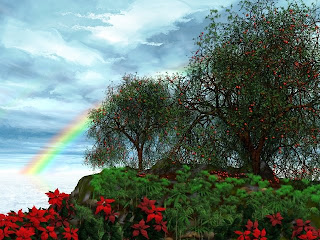 Earth Mother and Sky Father Spread
Earth Mother and Sky Father Spread
Finding Balance
(Two Cards)For people familiar with the Tarot, working with animal wisdom cards is another way to find balance in your life. With the Earth Mother and Sky Father spread, you learn to balance your maleness with your femaleness. Think in terms of giving and receiving when you are shuffling and dealing the cards. In traditional cosmology, Sky is dominant and giving, and Earth subordinate and receptive.
Use your dominant hand as Sky Father and your other hand as Earth Mother. Right-handed people would have the right card be Sky Father while left-handed people would have Sky Father as the left card. Pull one card with each hand and place them side-by-side. Right-handed people will have Sky Father-Earth Mother; Left-handed: Earth Mother-Sky Father.
When reading the two cards, notice any special relationship of the animals such as predator-prey or alliances. Do the animals belong to the same species group? Do they live in the same environment? These are clues as to what is out of balance in your life. Ask the animals to help you regain your balance.
SAMPLE READING:
Deck: “
Druid Animal Oracle” by Philip Carr-Gomm, Stephanie Carr-Gomm, and Bill Worthington
This deck contains twenty-five animals important in Celtic Lore. Using this desk will restrict you to only animals of the British Isles. Therefore, you will need to look for more subtle clues in the cards.
After shuffling the cards, you draw Badger as Sky Father and Owl as Earth Mother. What do you know about this pair? They are different species, but both are warm-blooded carnivores. However, one prefers life on the earth, while the other prefers the skies. Badger lives in setts dug into in the ground; Owl lives in stick nests fashioned in trees. However in Celtic lore, Badger is the Keeper of Traditions, while Owl is one of the sixth Oldest Animals of the world. Seemingly opposite animals are subtly joined as one under Celtic traditions.
What is interesting is about this pair is that a land mammal is Sky Father; a bird is Earth Mother. What is significant is that they are warm-blooded carnivores that possess ancient wisdom. Badger and Owl suggests that perhaps you have been in one place too long in your life. It is time to move on. Use the wisdom of Badger and Owl to decide where your life path needs to go.
--------------------------------------
A Note On Handedness and CardsMost people think in terms of “right” as dominant and male. Since “right” is traditionally associated with sun and light, people see “right” as the ‘yang’ side. “Left” is associated with darkness and night, and is the ‘yin’ side.
However, in using objects such as cards, handedness does matters. A left-hander goes to the left and sees the left as natural. This runs counter to traditional thinking, which labels left as “sinister”. However, left-handed people give with their left and receive with their right, which is the opposite of right-handedness. If you think in terms of receiving and giving, then handedness matters. In two and three card spreads, this is something to be considered, especially when direction matters. The hand you use is the dominant male hand.
In many cultures, left-handedness is viewed as a bad omen. In many places, the use of the left-hand is taboo. Left-handed people are forced to eat and write right-handed. In Tarot cards, the Devil is left-handed symbolizing Western cultural view on “left”.
-------------------------------
For a two card reading ($US 15) : contact me at animalteachers @ gmail.com. Copyright: Virginia Carper, Animal Teachers Enterprises, 2008
-------------------------------
















